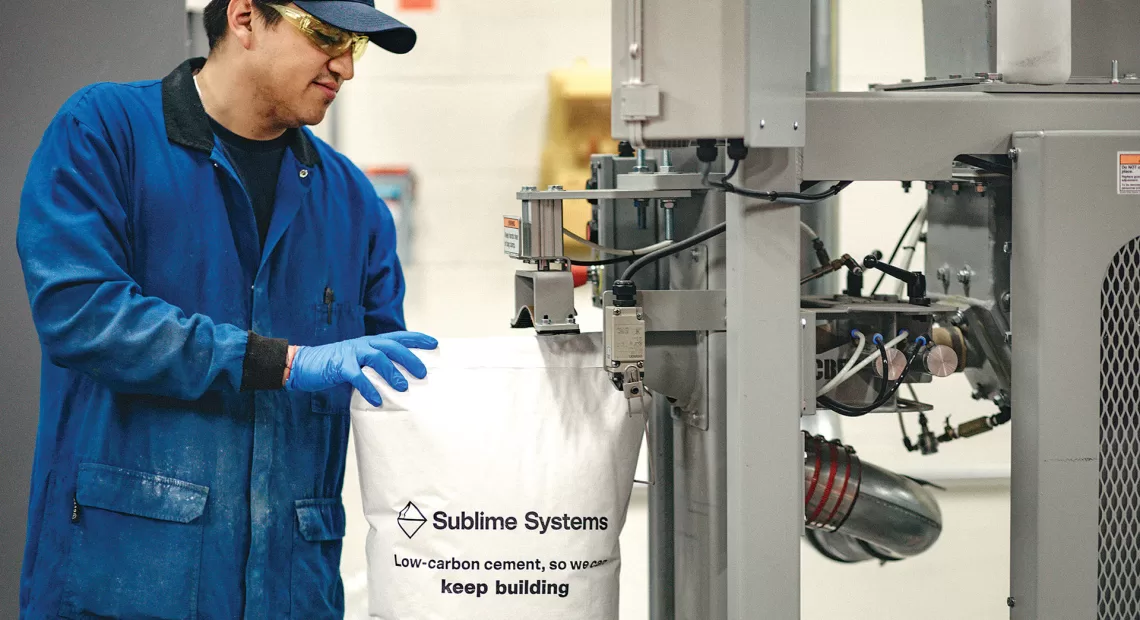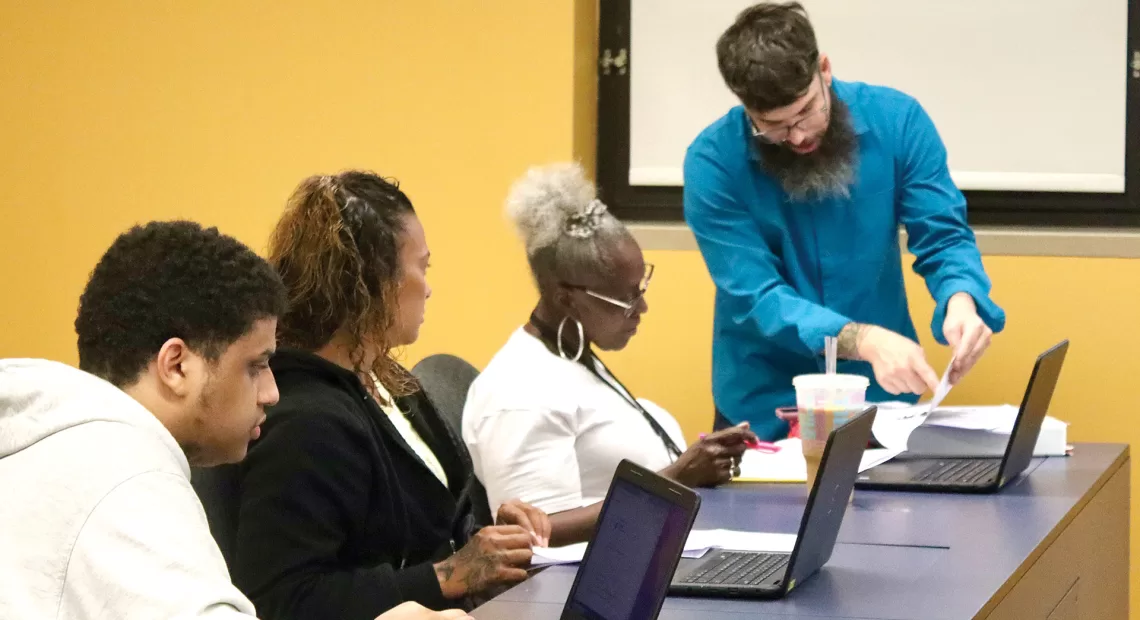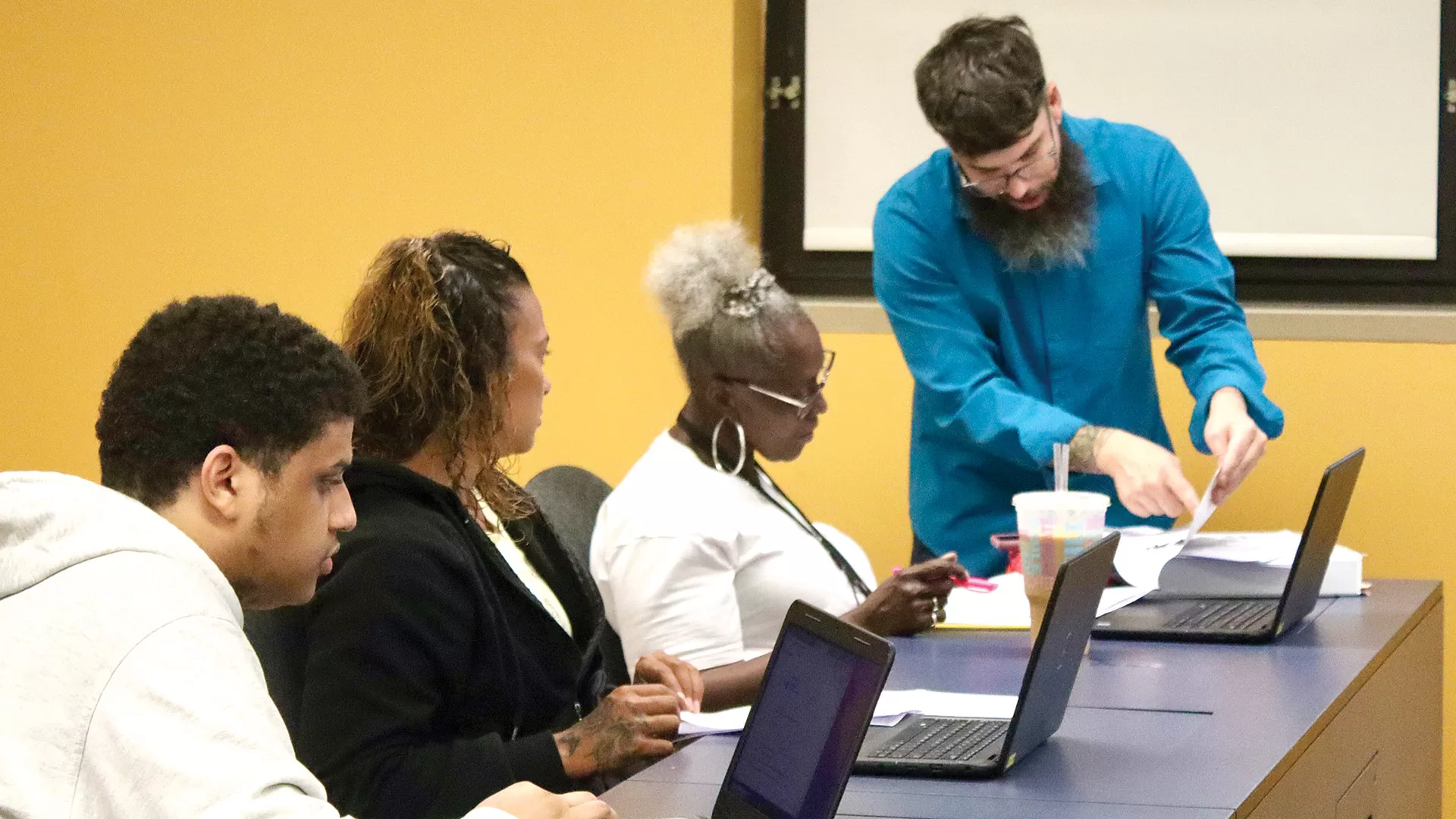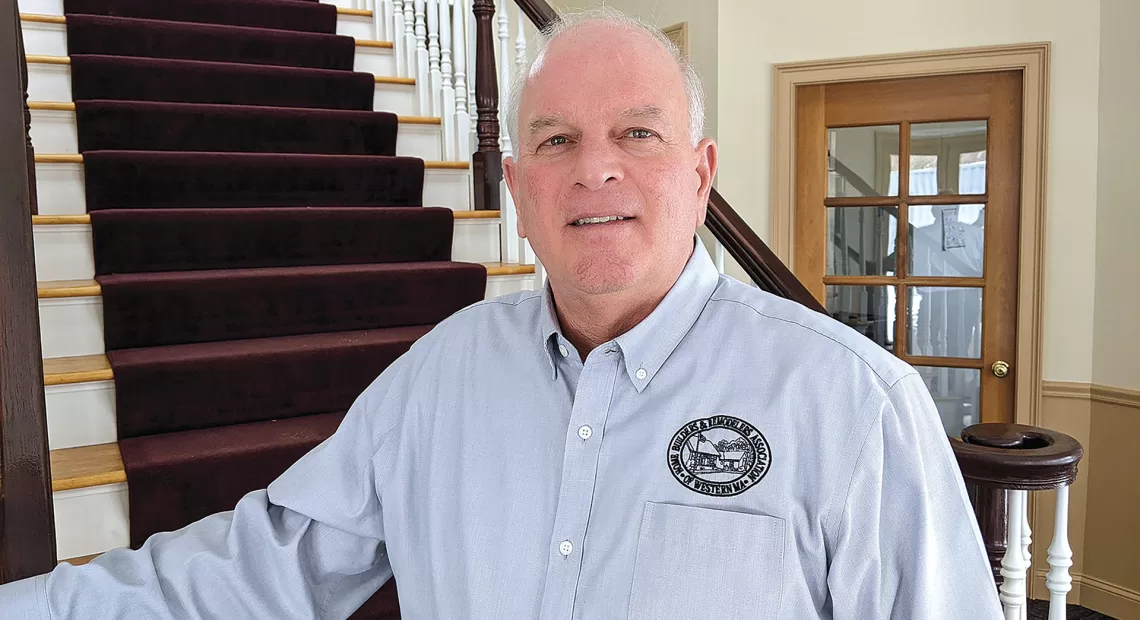Concrete Example
It’s called the Justice40 Initiative, also known as Section 223 of Executive Order 14008, “Tackling the Climate Crisis at Home and Abroad.”
It was issued by President Biden his first week in office back in 2021, and it directs 40% (hence the name) of the overall benefits of certain federal investments — including those in clean energy and energy efficiency, clean transit, affordable and sustainable housing, training and workforce development, and more — to flow to disadvantaged communities.
Holyoke still fits that description, and the fact that it does is one of many factors that has brought Sublime Systems, the Somerville-based startup that manufactures what it calls “low-carbon cement,” to the Paper City in an ambitious, $150 million venture that brings the city’s past, present, and future together.
Specifically, Sublime, guided by the Justice40 Initiative tools, its pending application for funding to the Department of Energy’s Office of Clean Energy Demonstrations, and other factors, including accessibility to abundant renewable energy (hydropower), eventually settled on a 14-acre sliver of land, an island in some respects, that lies between the city’s lower canal and the Connecticut River to scale up its operation.
There, the company expects to break ground in early 2025 on a plant that will produce 30,000 tons of cement that is much kinder to the planet than the products that have been produced to date. The application to OCED is for funds for accelerated construction of this facility, and the program in question is one of many covered by Justice40.
“Sublime ultimately selected Holyoke because of the dual opportunity to help local people in the near term while working toward swift and massive impact on global CO2 emissions,” said Erin Glabets, Sublime’s head of Communications, as she summed up the company’s mission — and decision to take its next critical step in Holyoke — in succinct fashion.
Launched from research at the Massachusetts Institute of Technology, the company was founded by Leah Ellis and Yet-Ming Chiang to essentially revolutionize cement production.
“Sublime ultimately selected Holyoke because of the dual opportunity to help local people in the near term while working toward swift and massive impact on global CO2 emissions.”
While doing that, it has become part of an exciting new era in manufacturing in the nation’s first planned industrial city, one focused on green manufacturing and green energy.
Indeed, while Sublime is an environmental story and part of what Gov. Maura Healey calls the ‘climate curtain’ taking shape in the Commonwealth, it is also an economic-development story and an example of the kind of company Holyoke is trying to attract with its strong blend of clean, lower-cost hydroelectric energy; large inventory of old mill space; and accessible location off several major highways.
“Sublime Systems’ low-carbon cement manufacturing project is not just a business development — it is a major stride towards the Holyoke we envision — innovative, prosperous, enterprising, and future-oriented,” Holyoke Mayor Joshua Garcia said. “By supporting this initiative, we are fostering a new paradigm where economic growth and the health of our planet are seen as interconnected and interdependent, not separate or mutually exclusive.”
Cleaner and Greener
As noted, this is a story with many elements, both figuratively and literally, the most obvious being a fundamental change in not only how cement is produced, but how such production impacts the environment.
“The founders wanted to de-carbonize cement,” Glabets said. “Cement is a huge emitter, a high-polluting industry just as a function of how it’s made, and it’s been made the same way for about 200 years — by taking limestone, a mineral that is half carbon dioxide by weight, and breaking that down into reactive ingredients.
“When you break it down, all that CO2 gets released into the air,” she went on. “And the way you break it down is with a very high heat process — a fossil-fuel kiln that needs to reach about 1,400 degrees Celsius. All that contributes to very high carbon emissions for the industry.”
Sublime takes a much cleaner and greener approach, using an electrochemical process that can turn abundantly available non-carbonate rocks and centuries of industrial waste that don’t release CO2 when they are decomposed into cement at ambient temperature — eliminating the need for fossil fuels entirely.
“We can use minerals that don’t have CO2 in them, so there’s no emission on that side,” she explained. “And we can do it at low heat and with a fully electrified process, so there’s no emissions there, either. So the cement has the same chemical makeup as the old stuff, as the more polluting, Portland cement, as it’s called, and it can be used in concrete the same way.”
The company has taken production to a pilot level — about 250 tons per year — in Somerville, Glabets said, adding that the next step is essentially scaling up. And that’s where Holyoke becomes a huge part of the story.
Elaborating, she said most cement plants currently operating in this company produce 1 million tons per year. Sublime wants to someday get to that level of production, but in the meantime, it will take the incremental, or intermediate, step of creating what could be called a demonstration facility.
As it commenced a search for where to build that facility, the company considered a number of factors. For starters, she said the company wanted to be close to sources of raw materials, and also close to its headquarters in Somerville. Meanwhile, it would require a large footprint on which to build, and sites of the size eventually found in Holyoke, about 14 acres, are becoming increasingly difficult to locate.
Other ingredients include accessibility, an ample supply of customers within a short distance of the demonstration facility, as well as a community that would welcome such a large-scale industrial manufacturing facility and had the zoning and permitting for it, she went on, adding that not all cities and towns are welcoming.
And then, there’s the company’s desire for clean energy to power that plant.
“Because what we do is meant to be as green as possible, powering our electrical process with renewables is really important,” she told BusinessWest. “So finding a place with a really green grid was at the top of our list.”
As was a desire to address some of the goals of the Justice40 Initiative, said Pat Beaudry, a Holyoke native now serving as the company’s Project Development manager.
He described his recent work as a “reality check” to determine if Sublime’s facility was something Holyoke residents really wanted and needed in their community. After months of meeting with various constituencies, including residents, officials, nonprofits, labor, and economic-development agencies, he said the answer to that question was a resounding ‘yes’ — for many reasons, he said, but especially a desire to write a new and exciting chapter in the city’s long and distinguished industrial history.
“Even though a lot of people in the city don’t have a direct history of working in the paper mills, they grew up hearing stories from their parents about what it looked like then and the opportunities that abounded downtown,” Beaudry told BusinessWest. “And I think people are ready to go back to the future with a cutting-edge industry.”
Rising Interest
There were a few other options to consider for locating the plant, Glabets said, but Holyoke’s assets, overlaid with the guidelines of Justice40 Initiative, steered the company to the Water Street site, which was home to a series of paper mills that were consolidated over time but had been dormant for several years and were eventually demolished.
Construction, as noted, is expected to begin in early 2025, with the plant coming online in 2026. The cement it produces will be an in-demand item, she noted, adding that end users, be they municipalities or private businesses, are increasingly looking to incorporate green building materials in their projects, thus reducing their overall carbon footprint and what are known as scope 3 emissions, indirect greenhouse-gas emissions that occur in an organization’s value chain.
“Many large companies are working to reduce those scope 3 emissions. And when building a new facility, whether it’s a large data warehouse or something to house any sort of operation, if they can build that facility in very a low-carbon way, that’s one way to accomplish that goal,” Glabets said.
She added that Sublime is already seeing solid interest from large infrastructure owners and end companies that fall into that category.
“Because today’s cement is so high-emitting — for every ton of cement made, a ton of CO2 gets released — this is a very effective lever for reducing those emissions.”















 “Generally, anti-harassment training is a helpful addition the employer’s tool chest for preventive measures against discrimination and harassment.”
“Generally, anti-harassment training is a helpful addition the employer’s tool chest for preventive measures against discrimination and harassment.”

